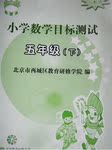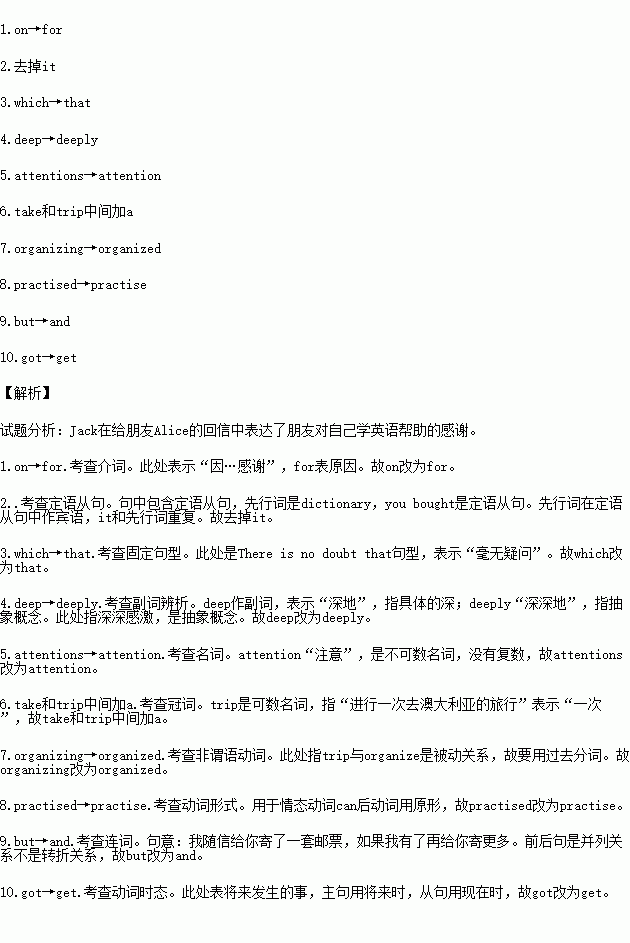题目内容
假定英语课上老师要求同桌交换修改作文, 请你修改你同桌写的以下作文。文中共有十处语言错误, 每句中最多有两处。错误涉及一个单词的增加, 删除, 或修改。
增加:在缺词处加一个漏字符号(∧),并在下面写出该加的词。
删除:把多余的词用斜线( \ )划掉。
修改:在错的词下划一横线,在该词下面写出改正后的词。
注意: 每处错误及修改均仅限一次;只允许修改10处, 多者从第11处起不计分。
Dear Alice,
I was delighted to receive your letter. Thank you on the English dictionary you bought it for me. I received it this morning. There is no doubt which it is of great help to me. I’m deep grateful for your advice that I should pay more attentions to practicing my spoken English. I’ve made up my mind to speak English both in and out of class. Next month I’ll take trip to Australia, which is organizing by my school. I hope I can practiced my spoken English there as much as possible. By the way, I am sending you a set of stamps with this letter, but I’ll send you more if I got any. I do hope you will have a good holiday.
Yours,
Jack
 目标测试系列答案
目标测试系列答案
